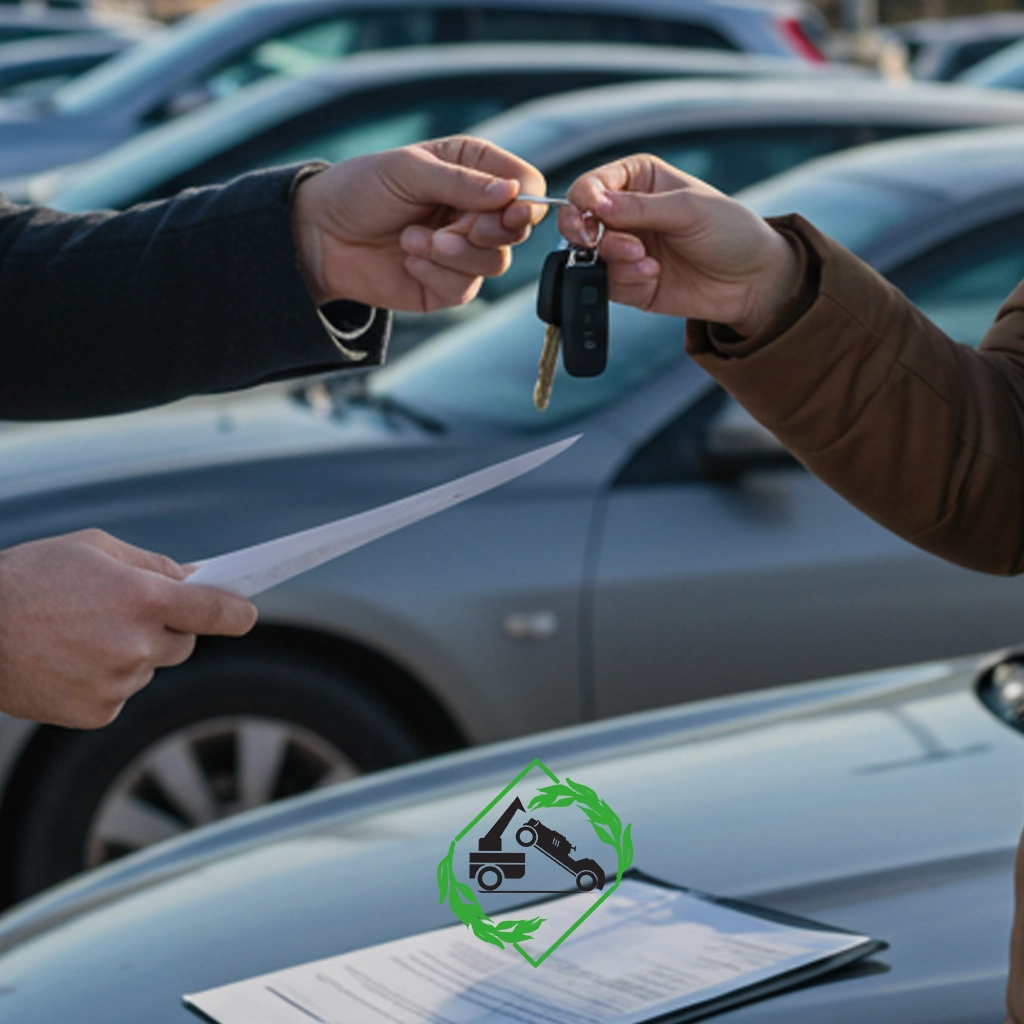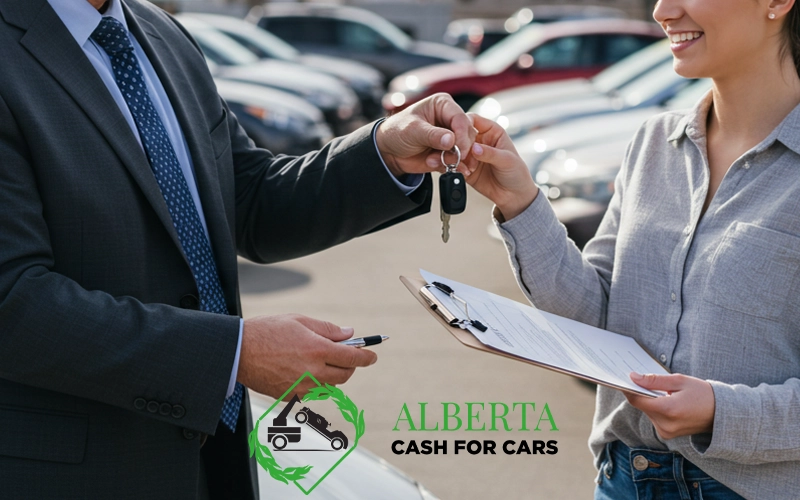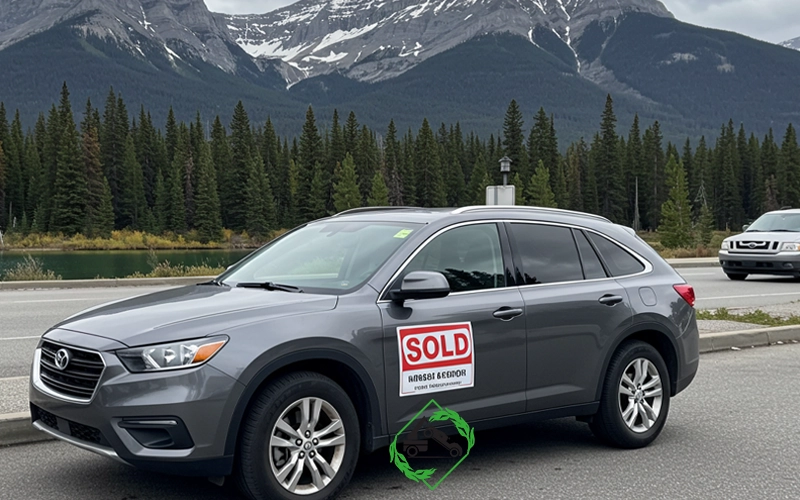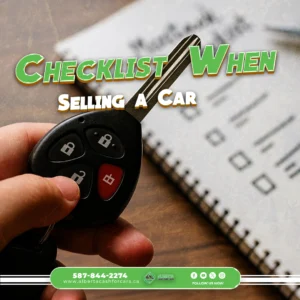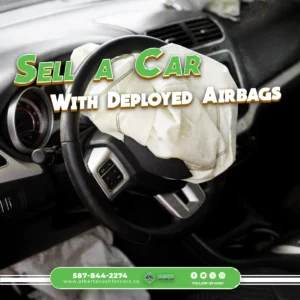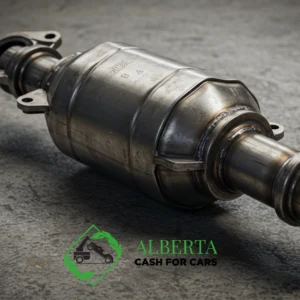It’s that moment, isn’t it? You’ve decided it’s time for a new set of wheels, or maybe you just need to free up some driveway space (and some cash!). But then the thought hits you: “Okay, how do I actually do this?” The process of how to sell a used car in Canada can feel a bit daunting, with all the paperwork, pricing, and finding the right buyer.
You might be wondering about the best way to get the most money, how to handle test drives, or what legal bits and bobs you need to take care of. It’s a common feeling, because selling a car isn’t like selling an old sofa; there are regulations, expectations, and a fair bit of trust involved.
But don’t worry! Whether you’re in bustling Toronto, scenic Vancouver, or right here in the heart of Alberta, understanding how to sell a used car in Canada is completely manageable. With a clear plan, you can navigate the process smoothly, legally, and hopefully, profitably. So, let’s break down everything you need to know to confidently sell your used car and get the best Cash for Cars Calgary experience.
Step 1: Assess Your Car’s Condition – Be Honest and Realistic
Before you even think about putting a “For Sale” sign on your car, take a good, hard look at it. Being realistic about your vehicle’s condition is the first crucial step in figuring out how to sell a used car in Canada effectively.
Exterior: Walk around your car. Are there any dents, scratches, or rust spots? How are the tires looking – plenty of tread left, or are they getting close to needing replacement? Are the lights working?
Interior: Hop inside. Are the seats torn or stained? Does it smell fresh, or are there lingering odours? Do all the power windows, locks, and infotainment features work correctly?
Mechanicals: Does it run smoothly? Are there any warning lights on the dash? Does it make any strange noises when you drive, brake, or turn? When was your last oil change or major service?
Documentation: Gather all your service records, maintenance receipts, and any repair invoices. This paper trail is invaluable! It shows potential buyers you’ve taken good care of the car, which can help justify your asking price and build trust.
Being honest with yourself about any flaws helps you set a realistic price and prepare for questions from potential buyers.
Step 2: Determine Fair Market Value – Research is Your Friend
Once you know your car’s true condition, the next big question is, “What’s it worth?” Pricing your car correctly is vital; too high, and it won’t sell; too low, and you’ll lose money.
Online Valuation Tools
Websites like Canadian Black Book (CBB) and Kelley Blue Book (KBB.ca) are excellent resources. They provide estimated trade-in and retail values based on your car’s make, model, year, trim, mileage, and condition. Remember, these are estimates, not guarantees.
Compare to Similar Listings
Search online marketplaces (AutoTrader.ca, Kijiji, Facebook Marketplace) and local dealership inventories for identical or very similar vehicles. Pay close attention to cars with similar mileage, features, and overall condition in your specific region. This gives you a real-time sense of what buyers are actually paying.
Factor in Your Car’s Specifics
- Mileage: Generally, lower mileage fetches a higher price.
- Condition: A well-maintained car with a clean interior and exterior will command more.
- Features: Desirable options like heated seats, navigation, sunroofs, or all-wheel drive can add value.
- Service History: A comprehensive history of regular maintenance is a major selling point.
Consider Supply and Demand
Is your car model currently in high demand? Is there a surplus of similar vehicles for sale? Local market conditions can affect pricing. Aim for a competitive price that reflects your car’s true worth, leaving a little room for negotiation.
Step 3: Prepare Your Car for Sale – Presentation is Key

Just as a clean home leaves a strong first impression, so does a well-prepared car; even when you’re focused on how to sell a used car in Canada efficiently, a modest investment in presentation can yield significant returns. Begin with a thorough cleaning and detailing: meticulously wash and wax the exterior, clean wheels and tires, and eliminate any dirt or grime. For the interior, vacuum all surfaces, wipe down the dash and door panels, clean windows, empty all compartments, remove personal belongings, and consider using an air freshener.
A gently wiped-down or professionally detailed engine bay also subtly signals a well-maintained vehicle. Furthermore, address minor fixes—like replacing burnt-out lightbulbs, topping up fluids, or fixing small trim pieces—as these inexpensive repairs prevent buyer deterrence and enhance perceived value. Finally, ensure all service records are neatly organized, demonstrating proactive care and reinforcing buyer confidence in your vehicle’s history.
Step 4: Choose Your Selling Method – Private Sale vs. Dealership vs. Other Options
You have a few paths when figuring out how to sell a used car in Canada. Each has its pros and cons.
Private Sale (You sell it directly)
- Pros: Potentially the highest profit, as you cut out the middleman. You have full control over pricing and negotiation.
- Cons: Requires the most time and effort (creating ads, answering inquiries, scheduling viewings, handling paperwork). You’ll deal with tire-kickers and low-ballers. You are responsible for all legal disclosures.
- Best For: Sellers who want to maximize profit and have the time and patience to manage the process.
Dealership Trade-in
- Pros: Extremely convenient and fast. You don’t have to deal with advertising, viewings, or paperwork (beyond the trade-in agreement). You might save on taxes (in most provinces, you only pay tax on the difference between the new car’s price and your trade-in value).
- Cons: You’ll almost certainly get less money for your car than a private sale. Dealerships need to make a profit.
- Best For: Sellers prioritizing convenience and a quick transaction, especially when buying another car from the same dealer.
Dealership Consignment
- Pros: The dealer sells your car for you, handling marketing and showings. You still own the car until it sells.
- Cons: The dealer takes a commission, reducing your profit. The car might sit unsold for a while.
Online Car Buying Services / Instant Offers
- Pros: Very quick and convenient. Get an instant online quote, often followed by a quick inspection and payment.
- Cons: Offers are often lower than private sale values, similar to trade-in values, as these companies also need to profit.
“Cash for Cars” / Scrap Auto Removal Services
- Pros: Ideal for cars that are very old, not running, have significant mechanical issues, or are simply not worth selling privately. Fast, hassle-free, and they often pick up the vehicle.
- Cons: You will get scrap value or very minimal cash, as they are often buying for parts or metal.
- Best For: Non-running cars, damaged vehicles, or those beyond economical repair. For quick, no-hassle removal of any unwanted vehicle across Alberta, Alberta cash for cars specializes in offering competitive cash payments and handling all aspects of pickup and paperwork.
Step 5: Create a Compelling Listing – Your Car’s Story
If you opt for a private sale, your advertisement essentially becomes your car’s resume, so it needs to truly shine. Start by taking high-quality, well-lit photos from every angle—exterior, interior, engine bay, trunk, and tires—showcasing any unique features while avoiding blurry, dark, or cluttered shots, as photos are consistently the first element buyers notice. Follow this with a comprehensive description that covers the basics like make, model, year, trim, mileage, and color, then elaborately list all key features such as A/C, heated seats, sunroof, navigation, AWD, and important safety features.
Be transparent about the vehicle’s condition, honestly noting any flaws like dents, scratches, rust, or interior wear, but always balance these with its positive attributes. Crucially, highlight recent maintenance and upgrades, referencing your service records for items like new brakes, recent tire replacements, or transmission fluid flushes, as this demonstrates diligent care. A brief and honest explanation for why you’re selling (e.g., “upgrading to a larger family vehicle” or “moving to the city, no longer need a car”) can significantly build trust with potential buyers. Clearly state your pricing, indicating if it’s firm or negotiable (e.g., “OBO” for “Or Best Offer”), and provide your preferred contact information, whether it’s phone, email, or both.
Step 6: Screening Buyers and Arranging Viewings/Test Drives
This is where you shift from marketing to active selling. Be prepared to screen potential buyers. Be wary of emails or texts that sound too good to be true, offer more than your asking price, or involve complicated payment schemes. Look for genuine inquiries. Try to meet during daylight hours. Choose a public, well-lit location if you’re uncomfortable having people at your home.
Test Drives (CRITICAL!)
- Proof of Insurance: Always ask to see the buyer’s valid driver’s license and proof of insurance before they get behind the wheel. In Alberta, if the buyer has valid insurance, their policy typically extends to cover them while driving your car. If they don’t have their own insurance, your policy might cover them, but it’s risky. Check with your insurer.
- Go With Them: Always accompany the buyer on the test drive. You know the car best, and you can point out features.
- Set a Route: Plan a route beforehand that includes various driving conditions (city streets, some open road) but avoids heavy traffic or areas where you might get lost.
- Be Prepared for Questions: Buyers will ask about the car’s history, performance, and any issues. Be honest and refer to your documentation.
Step 7: The Paperwork – Making it Legal and Official (Alberta Specifics)
This is the non-negotiable part of how to sell a used car in Canada to ensure a smooth, legal transfer of ownership.
- Bill of Sale: This is your most important document. It proves the transfer of ownership. In Alberta, there’s no single mandatory government Bill of Sale form, but reputable templates are widely available online. It should include:
- Full legal names and addresses of both seller and buyer.
- Date of sale.
- Vehicle Information: Make, model, year, VIN (Vehicle Identification Number).
- Purchase Price.
- Odometer reading at the time of sale.
- A statement that the vehicle is sold “as-is, where-is” (this is common in private sales, meaning no warranty is provided after the sale).
- Signatures of both buyer and seller.
- Crucially: Both buyer and seller should keep a signed copy.
- Vehicle Registration Certificate (Proof of Ownership): You, as the seller, will sign over the vehicle portion of your Alberta Vehicle Registration Certificate to the buyer. This formally transfers legal ownership to them.
- Remove Licence Plates: In Alberta, licence plates belong to the individual, not the car. Remove your plates before the car leaves your property. You can transfer them to another vehicle you own, or return them to an Alberta registry agent for cancellation.
- Cancel Registration: Once the car is sold and gone, officially cancel its registration with an Alberta registry agent. This is crucial to ensure you are no longer legally associated with the vehicle and are not liable for anything that happens to it after the sale.
- No Safety Inspection for Seller (Alberta): Unlike some other provinces (e.g., Ontario), Alberta does not require the seller to provide a safety inspection certificate for a private sale. The buyer is responsible for ensuring the vehicle meets safety standards before registering and operating it.
Step 8: Payment – Secure Your Funds
This is the pivotal moment of truth, so selecting a secure payment method is paramount. Bank Drafts or Certified Cheques are generally the safest options, as the funds are guaranteed by the issuing bank; however, you must always verify their authenticity directly with the issuing bank during banking hours before releasing your vehicle, and exercise extreme caution with drafts presented on weekends or outside normal banking operations. Electronic Funds Transfers (EFT) or Interac e-Transfers can be convenient for smaller sums, but ensure the funds are fully transferred and irrevocably deposited into your account before handing over the keys, and be mindful of daily transaction limits.
For cash payments, particularly for larger amounts, inherent risks exist; if accepting cash, arrange to complete the transaction at your bank, allowing a teller to verify the authenticity of the bills. As a rule, avoid personal cheques, PayPal for substantial transactions, or wire transfers from unfamiliar sources, and be extremely wary of any buyer offering more than your asking price or proposing unusual or convoluted payment schemes.
Conclusion: Confidence in Your Sale
Selling a used car, especially when navigating how to sell a used car in Canada, involves several steps, but none are overly complicated if you approach them systematically. From thoroughly assessing your vehicle and setting a fair price to creating a compelling listing and handling the paperwork correctly, each stage contributes to a smooth and successful sale. By being transparent, prepared, and prioritizing safety and legal compliance, you can confidently turn your old ride into cash and make room for your next adventure.

